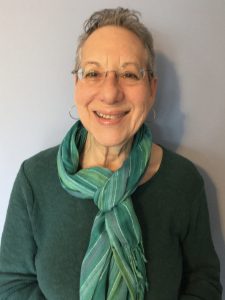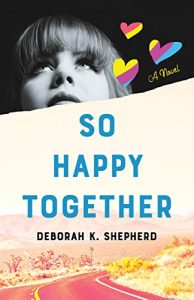WHAT’S YOUR GENRE? By Deborah K. Shepherd
 “I like it,” said the (very) young literary agent. “But, sorry. I don’t represent authors of historical fiction.”
“I like it,” said the (very) young literary agent. “But, sorry. I don’t represent authors of historical fiction.”
After submitting the first pages of my novel, So Happy Together, to dozens of agents online, I was making an in-person pitch at an all-day pre-pandemic event. Two agents had already turned me down.
“Historical? It’s my lifetime, when I came of age. It’s the 1960s to the 1980s. That’s not historical.”
“It is in publishing.” #
That’s how I found out I was a writer–not necessarily of women’s fiction or literary fiction, as I had thought– but of historical fiction, which I had heretofore associated with bodice-rippers sporting buff, 18th-century guys with shirts unbuttoned to their waists on the covers.
It wasn’t a genre I gravitated to, but since that agent’s pronouncement four years ago, I’ve read more and more historical fiction—no bodice-rippers– and am so in awe of the meticulous research and creativity that goes into the writing.
Nevertheless, my current work-in-progress is not of that genre. It’s not even fiction. I’m writing a memoir, and creative non-fiction seems to be my comfort zone—for now.
For poet and memoirist Elizabeth Garber, her two chosen genres seemed to blend easily into one another.
“I was a devoted journal writer, starting in my teens… I felt compelled to capture the details of my life because I had this intense fear if I didn’t, those days would disappear. In my mid-twenties, I emerged from a nine-year depression and started noticing life in exquisite details: I had to write about what I saw, in little poems of immediate moments.”
She brought out her first collection of poems when she was fifty, followed shortly by a second. While pursuing her MFA in Poetry, the poems grew longer, and Elizabeth gradually started writing her memories from early childhood into adulthood.
“This outpouring of memories became honed and refined over ten years and became my first memoir, Implosion.” Elizabeth’s second memoir is coming out this fall and, as she says, “Another story is waiting patiently. It’s a novel based on my grandmother’s life, as a love child of a great man’s scandal. This will require more research, and I look forward to discovering the craft of writing fiction.”
Best-selling author Terry Lynn Thomas started out writing historical romance/mystery. “I’ve always had a penchant for the old-timey Gothic novels of the 1960s and ‘70s. Those books with the women running away from the castles in their nightgowns captivated me with their brooding suspense and the social commentary of the times.”
Her first novel, The Spirit of Grace, doesn’t involve castles and nightgowns, but is told in true Gothic tradition, with a medium for a protagonist. Now she has eight published novels, six of them set in World War II. The Betrayal and The Witness are contemporary legal thrillers, featuring a sixty-two-year-old protagonist.
“I wanted to write stories that feature older protagonists– I think this is something that’s missing in the current publishing market. While the series is in the genre of legal mysteries, I explore social issues, female friendships, family and things women grapple with as we get older. Mysteries come naturally to me, but lately I’m wanting to write stories about grace, humanity, and relationships. As I grow as a writer, my stories become more character-focused. That’s the main thing, to keep growing as a storyteller.”
Julie Wittes Schlack–who writes regularly for Cognoscenti, an ideas and opinions site at NPR station WBUR in Boston– started out as a short story writer but has made her mark as a narrative non-fiction writer and finds a common thread in both genres.
“The commonalities lie in the process. I love doing research and find it equally applicable to both genres. Both require evocative but clear prose and a narrative voice. In non-fiction, I have a slightly better idea of my destination and how to get there. But when writing either, I’m generally just putting one foot in front of the other and trusting my subconscious to take me somewhere interesting. There are two obvious differences in the writing itself, though. While I tend to use scenes and a smattering of dialogue in my nonfiction, it’s much more expository than my fiction.” Julie’s first book, This All-at-Oneness, is a memoir in the form of linked essays; her second is a novel, Burning and Dodging.
As to which genre Julie prefers writing, she’s torn. “I love writing dialogue, and I get to use it much more in fiction. I also love the meld of research and expression that the personal essay accommodates: That’s the form that probably comes easiest.”
Elizabeth Garber’s narrative non-fiction grew out of her poetry. She’s writing prose now, but her language is still beautifully poetic.
For Terry Lynn Thomas, the important thing, whether writing in the Gothic tradition or in more modern settings, is to keep growing as a storyteller.
Julie Wittes-Schlack feels at home writing short stories or essays because they both “…impose a lot of helpful constraints; they have a very recognizable form that I can mold my writing to.”
What these writers have in common is an eagerness to explore different types of writing as a means of expression, and a willingness to learn—to be “genre fluid,” as it were.
After publishing an “accidental” historical novel and readying a memoir for publication, I’m tempted to write another historical novel, but this time with intent: I’m excited to see where it takes me as a writer and what I learn.
###
You can find more of Deborah’s writing at https:/deborahshepherdwrites.com and on Facebook (Deborah K. Shepherd Author), and her novel wherever books are sold.
SO HAPPY TOGETHER
 As her stultifying marriage is unravelling, and in the midst of mourning the loss of her creative self, Caro Tanner has a nightmare about Peter, an old love whom she hasn’t seen in twenty years. She takes this as a sign he still needs her. With her three children safely off to summer camp, Caro embarks on a pre-Facebook, pre–cell phone road trip to recapture who she once was and what she thinks she once had.
As her stultifying marriage is unravelling, and in the midst of mourning the loss of her creative self, Caro Tanner has a nightmare about Peter, an old love whom she hasn’t seen in twenty years. She takes this as a sign he still needs her. With her three children safely off to summer camp, Caro embarks on a pre-Facebook, pre–cell phone road trip to recapture who she once was and what she thinks she once had.
Set in the sex, drugs, and rock ’n roll ’60s in Tucson, Arizona—when Caro and Peter were kooky, colorful, and inseparable drama students—and in the suburban ’80s, when Caro’s creative spark has been quenched to serve the needs of her husband and children, So Happy Together explores the conundrum of love and sexual attraction, creativity and family responsibilities, and what happens when they are out of sync. It is a story of missed opportunities, the tantalizing possibility of second chances, and what we leave behind, carry forward, and settle for when we choose. It sits in that raw, messy, confounding, beautiful place where love resides.
BUY HERE
Category: On Writing






























